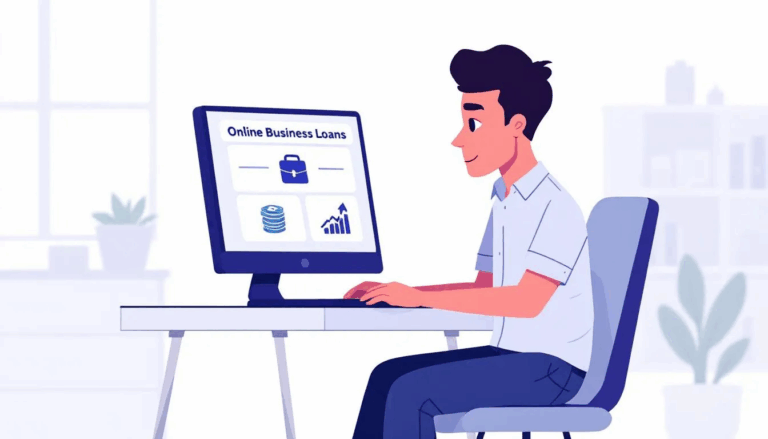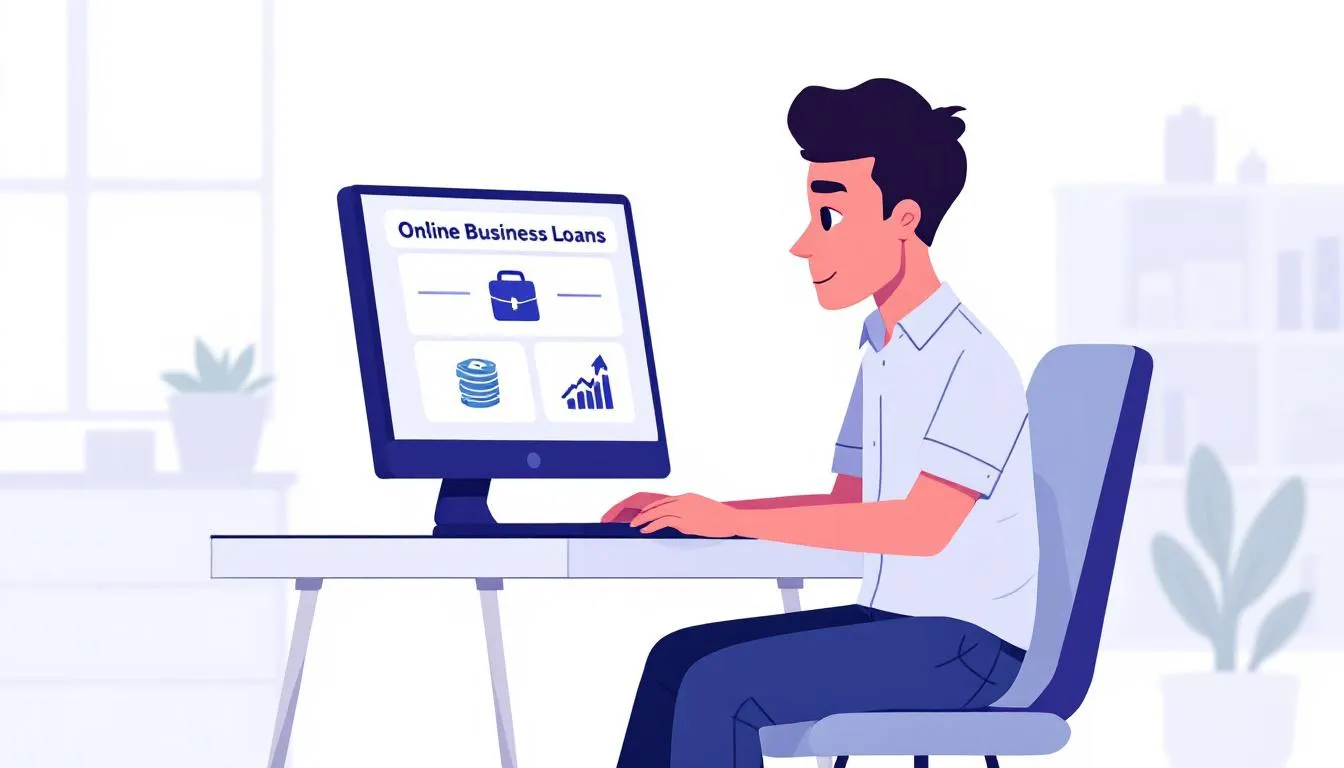What is Business Debt Management?
Business debt refers to any borrowed funds a company uses to support operations or growth. This includes:
- Trade credit debt: Outstanding balances with suppliers.
- Revolving debt: Credit card debt or business lines of credit that allow flexible borrowing.
- Installment debt: Structured business loans, such as term loans, SBA loans, or equipment leases, with a set payment schedule.
Companies take on debt to purchase assets, expand into new markets, or manage working capital during lean months. Debt can be a tool for growth when used to acquire assets that generate positive returns.
Debt management is the process of controlling and strategically repaying existing debt. Practical strategies for managing business debt and improving financial stability require assessing the current situation, optimizing business cash flow, and pursuing debt reduction and restructuring. By approaching debt as a balancing act, businesses can avoid the negative impact of poor financial planning while leveraging the benefits of financing options.
How much Business Debt is healthy?
Not all debt is created equal. Healthy debt should support business growth, provide measurable returns, and remain manageable within your financial situation. Taking on the right type and amount of debt can help your business expand, invest in new opportunities, and build a strong business credit profile, while the wrong debt can quickly strain cash flow and limit growth.
Two standard metrics help determine how much debt is healthy:
Debt-to-Equity Ratio (D/E): The debt-to-equity ratio compares total debt to owner’s equity. A lower ratio generally indicates stronger financial health, though acceptable levels vary by industry. For example, capital-intensive industries may naturally carry higher D/E ratios, while service-based businesses typically benefit from lower ratios to maintain flexibility.
Debt-Service-Coverage-Ratio (DSCR): The debt-service-coverage ratio compares net operating income to total debt payments. A DSCR of 1.25 or higher often indicates sustainable debt levels. A higher DSCR suggests your business generates enough revenue to meet debt obligations, reducing financial stress comfortably.
Additionally, the debt-to-income ratio (DTI) compares total debt obligations to business income to measure debt sustainability. Establishing a cap on the amount of debt a business can take on helps maintain financial stability and ensures that borrowing decisions support growth rather than overextend resources. Regularly reviewing these metrics can help you make informed decisions and avoid taking on more debt than your business can reasonably manage.
Good Business Debt Examples
- Small Business Administration (SBA) loans: SBA loans provide financing for business expansion with lower interest rates and longer repayment terms.
- Equipment loans: Equipment financing funds productivity-enhancing machinery that can generate a return on investment.
- Working capital loans: A working capital loan solution can help smooth out seasonal fluctuations or cover temporary cash shortfalls.
- Business lines of credit: A business line of credit offers short-term operating funds to maintain flexibility without overleveraging.
Bad Business Debt Examples
- High-interest credit card debt: Using business credit cards for ongoing expenses rather than strategic investments can strain cash flow. Many business credit cards have high APRs, significantly increasing the cost of debt.
- Loans with high fees or collateral requirements: Loans with high fees can increase the cost of debt and outweigh the benefits of small business loans. Secured business loans with a low LTV can limit the value of your current assets.
- Borrowed funds for non-essential or depreciating assets: These do not contribute to long-term growth.
- Excessive debt to cover existing obligations: Creates a cycle of dependency and financial stress.
Bad small business debt carries high-interest rates and offers little to no long-term value, straining cash flow and potentially harming credit. In contrast, healthy business debt is purposeful, sustainable, and structured to fuel expansion and growth, giving your company the financial leverage to thrive.
Why can Not Having Business Debt be a bad thing?
While the idea of operating a debt-free business is appealing, avoiding debt entirely can present its own set of challenges. In fact, a complete aversion to debt may inadvertently hinder growth and financial flexibility. Consider the following potential drawbacks:
- Missed Growth Opportunities: Without access to financing, expanding into new markets or scaling operations can become challenging. Debt, when used strategically, can provide the necessary capital to seize these opportunities. For instance, companies that avoid debt might find it challenging to invest in research and development or to hire additional staff, potentially falling behind competitors who leverage financing to fuel growth.
- Limited Cash Flow Flexibility: Borrowed funds can serve as a buffer during periods of slow revenue, ensuring that day-to-day operations continue smoothly. Without this financial cushion, seasonal businesses may struggle to cover operational costs during downturns, leading to potential disruptions.
- Loss of Competitive Edge: Competitors who utilize financing options may have an advantage in terms of faster growth and innovation. By not engaging in debt, a business might find itself at a disadvantage, unable to capitalize on market trends or technological advancements as swiftly as its counterparts.
- Weakened Business Credit Profile: Establishing and maintaining a solid credit history often requires taking on and responsibly managing debt. A debt-free business may lack a credit profile, making it challenging to secure favorable financing terms in the future when opportunities arise.
In conclusion, while avoiding debt can be a prudent strategy for some businesses, it’s essential to recognize the potential limitations it imposes. Strategic use of debt can provide the necessary resources to grow, adapt, and remain competitive in an ever-evolving market landscape.
What is the Cost of Debt?
The cost of debt is the effective interest rate a business pays on borrowed funds, adjusted for tax benefits in some cases. It’s critical because it determines whether taking on new debt will generate more money than it costs.
Calculating Cost of Debt
The cost of debt formula is:
Cost of Debt = (Total Interest Payments ÷ Total Debt) × (1 – Tax Rate)
A clear understanding of your outstanding debt is essential for creating a repayment plan. Compile a detailed inventory of all outstanding obligations, including loans, lines of credit, credit cards, and invoices, recording the balance, interest rate, monthly payment, and due date for each.
What are the Benefits of Debt Financing?
Debt financing enables business owners to access capital without relinquishing ownership. When used correctly, it provides working capital, enhances productivity, and creates opportunities for expansion. Monthly payments are predictable, and interest payments may be tax-deductible.
What are the drawbacks of Debt Financing?
The drawbacks include business loan interest payments that add to business expenses, strict repayment terms, and the risk of default if cash flow falters. Businesses must pay interest on small business loans and other forms of debt. Debt stress can negatively affect both the physical and emotional health of business owners.
Debt Financing Pros & Cons
Pros
- Access to capital without giving up equity.
- Predictable payment schedule.
- Potential tax benefits.
- Can support business growth.
Cons
- High interest rates on some loans.
- Monthly payments reduce cash flow.
- Serious consequences for default.
- May require collateral.
How do I effectively Manage Business Debt?
When running your own business, managing debt effectively means turning financial challenges into opportunities. Debt repayment should be structured around your business’s needs, helping to alleviate financial strain and keep operations running smoothly.
Assess Your Situation
Compile a detailed inventory of all outstanding obligations, including business loans, lines of credit, credit cards, and invoices, recording the balance, interest rate, monthly payment, and due date for each. A clear understanding of your outstanding debt is essential for creating a repayment plan.
Identify Reasons for Debt
Determine whether existing debt was used for good debt purposes, such as expansion, or bad debt, such as covering shortfalls without addressing root causes.
Prioritize Debt with the Highest Costs
The Avalanche Method targets debts with the highest interest rates to save money over time. Alternatively, the Snowball Method focuses on paying off smaller debts first to build momentum.
Create a Viable Budget & Repayment Plan
Creating a structured repayment plan is essential to stay on track with debt repayment and monitor progress. Regularly reviewing your budget can help identify trends in revenue and expenses, which are crucial to debt management. Ensure the business budget accounts for the new payment plan. Consider using accounting software to help plan your budget.
Increase Cash Flow
Improving cash flow can aid in debt repayment by either boosting sales or reducing expenses. Implement cost-cutting measures by identifying and eliminating non-essential expenses, such as unused subscriptions or excessive utilities. Increasing revenue through enhanced sales efforts or product diversification can alleviate financial strain. Selling unused or underperforming assets can generate funds to help reduce debt levels.
Consider a Business Debt Consolidation Loan
A business debt consolidation loan can simplify payments by combining multiple debts into a single loan with potentially lower interest rates. Refinancing can provide immediate debt relief by reducing monthly payments and improving cash flow.
Seek Professional Advice
Seeking professional financial advice can support the development of an effective debt management plan. Business mentors and financial advisors can also provide guidance on repayment strategies and negotiating payment terms with creditors.
How can my Business Avoid Defaulting on Business Loans?
Avoiding default requires a proactive approach:
- Ensure you actually need the business loan: The first step is to determine whether the business loan can help you grow your business. Usually, when a business defaults on a loan, it’s because it took the loan out for the wrong reasons. Ensure the investment opportunity and potential revenue growth justify the cost of debt.
- Maintain a realistic budget and stick to a payment schedule: Regularly fund your business bank account during every pay cycle by setting aside a fixed percentage of your income. This practice ensures you have cash available to meet obligations without relying on additional debt.
- Communicate with lenders early if trouble paying arises: If you anticipate difficulty in meeting a payment, contact your lender immediately. Open communication can lead to potential solutions such as extended payment terms or temporary relief.
- Refinance or restructure loans if necessary: Consider consolidating multiple loans (business loan stacking) into a single payment with longer terms to reduce monthly expenses. This approach can simplify cash flow management and potentially lower interest rates.
- Negotiate payment terms with suppliers or creditors to improve cash flow: Engage with business vendors and creditors to discuss extended payment terms or discounts for early payments. Such negotiations can ease financial pressure and enhance liquidity.
- Establish financial reserves to cover unexpected expenses: Build an emergency fund by saving a portion of your income regularly. Maintaining a business savings account can help during urgent situations. This reserve can help manage unforeseen costs without resorting to high-interest loans.
By implementing these strategies, businesses can reduce the risk of default and maintain financial stability.
Frequently Asked Questions
Here are the most common questions about managing business debt.
What Business Loans Have the Lowest Cost of Debt?
Generally, loans with lower interest rates, minimal fees, and favorable repayment terms carry the lowest cost of debt. Choosing the correct type of loan can help your business access capital while minimizing the financial burden. Examples include:
- SBA loans: Backed by the Small Business Administration, these loans often offer lower interest rates and longer repayment terms than conventional financing, making them one of the most cost-effective options for small businesses. Getting an SBA loan is ideal for business expansion, equipment purchases, or working capital needs.
- Traditional bank loans: Conventional bank loans can offer low interest rates if your business meets strict qualifications, such as strong credit, consistent revenue, and a solid business plan. These loans are often used for larger investments and can provide predictable repayment schedules.
- Equipment loans: Financing for machinery or other business equipment may carry low interest rates because the equipment itself serves as collateral. This reduces the lender’s risk and can make equipment loans a cost-efficient way to invest in productivity-enhancing assets.
By strategically choosing loans with lower interest and fewer fees, businesses can reduce their overall debt burden, improve cash flow, and maintain financial flexibility.
When does it make sense to Pay Business Loans off early?
Paying off business loans ahead of schedule can be a wise strategy to save money on interest payments and reduce overall debt levels. However, it only makes sense under certain conditions. Consider the following:
- No prepayment penalties: Some loans charge fees for early repayment, which can offset the benefits of paying off debt sooner. Always review your loan agreement to ensure early payoff won’t trigger penalties.
- Excess cash flow or a lump sum available: Paying off a loan early is feasible when your business has surplus cash or receives a one-time inflow of funds. Using this capital to reduce debt can free up future cash flow for reinvestment in operations, expansion, or other strategic initiatives.
- Interest savings outweigh opportunity costs: Compare the total interest you would save by paying off the loan early with the potential returns you could earn by investing the same cash elsewhere in the business. Early repayment makes sense if the savings exceed what you could earn through alternative uses of the funds.
- Evaluate long-term financial impact: Calculate potential savings by comparing remaining interest payments with any early payoff fees. Also consider how early repayment might affect your business credit profile, liquidity, and ability to leverage debt for future growth.
Paying business loans off early can strengthen your financial position, reduce stress from ongoing obligations, and improve profitability—but only when approached strategically and with a clear understanding of the trade-offs.
What is Equity Financing & how does it differ from Debt Financing?
Equity financing means selling a portion of your ownership in exchange for capital. Unlike debt financing, there are no monthly payments; however, you give up a portion of your business and future profits to business investors.
Venture Capital
Professional investment firms provide large sums in exchange for equity and often exert influence over business decisions.
Angel Investors
High-net-worth individuals who invest personal funds in startups often offer mentorship along with capital.
Equity Financing Pros & Cons
Pros
- No monthly debt payments.
- Access to capital without repayment obligations.
- Potential strategic guidance from investors.
Cons
- Loss of ownership and control.
- Sharing profits with investors.
- Limited availability for smaller businesses.
How do I decide between Equity Financing & Debt Financing?
Small business owners must weigh their financial situation, growth plans, and willingness to share control. If predictable monthly payments fit your budget, debt financing may be the right loan option. If you need significant capital and are open to outside influence, equity financing could be a better fit.
Which Cash Flow issues can’t be solved through Financing?
Not every cash flow challenge can be solved with more debt. Financing won’t help if:
- Poor business operations are driving losses
- Business expenses consistently exceed revenue
- Inefficient systems drain working capital
Steps you can take include reducing expenses, improving accounts receivable collection, and renegotiating payment terms with vendors. Sometimes, the solution lies not in more financing but in reworking how your business operates day-to-day.
How to Manage Business Debt – Final Thoughts
Business debt doesn’t have to be a burden. With the right debt management plan, a business owner can balance financial obligations, maintain overall financial health, and turn debt into an engine for growth.
Whether you’re paying down smaller debts, consolidating existing debt, or pursuing refinancing to secure a lower interest rate, the steps you take today will shape your company’s financial future. By approaching debt strategically, you’ll protect your business from financial strain while creating the flexibility needed to grow and succeed.
Contact us if you have more questions about managing business debt or applying for a small business loan. Our alternative financing experts can help you find the funding programs for your business needs.












